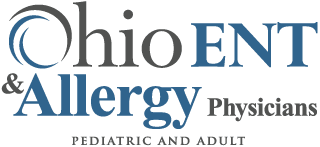Provided by Ashish Shah, MD
Nosebleeds (epistaxis) are one of the most common issues seen by Ear, Nose and Throat doctors. Patients with recurrent nosebleeds have a strong desire to rid themselves of this issue, given that nosebleeds often occur at inopportune times and places and ruin clothing! The main risk factor is dryness, but the increasing use of blood thinning medication is also a strong risk factor. High blood pressure, allergic rhinitis, chronic sinus disease, nasal trauma and bleeding disorders are other possible factors.
Most commonly, nosebleeds arise from small pinpoint areas of mucous membrane blood vessel disruption, even in the case of a gushing nosebleed. You would be surprised how much bleeding can occur from a blood vessel the size of a pencil tip! You should be reassured that it is very rare that nosebleeds – even when severe – would represent any concerning intranasal process. The vast majority of nosebleeds occur on the septum, the cartilage structure that divides the nose into two passages. Nosebleeds in the back of the nose which drain primarily down to the throat are more commonly related to high blood pressure. Some of these nosebleeds can be severe and more difficult to manage.
The main treatment of nosebleeds is prevention. Consistent use of moisturizing products on the mucous membrane of the septum is key. Any number of products can be effective, including petroleum jelly and saline gel using a cotton swab. Alternatively, nasal saline spray can be used at least a few times daily. A humidifier is also advised when you have the heat on since all heat is dry. Encourage children to limit digging in their nose and moisturize scabs in the nose instead of trying to remove them.
An active nosebleed should be treated with pressure for about fifteen minutes by pinching the nostrils against the septum. Holding the bony upper nose is ineffective. Stuffing tissue paper in the nose will only pull a scab off when the paper is removed, causing the nosebleed to recur.
If a nosebleed is recurrent or persistent, then nasal cautery or packing may be necessary. An ENT physician at Ohio ENT and Allergy Physicians can often cauterize the offending source with chemical cautery using silver nitrate or electrocautery. Most children will tolerate chemical cautery in the office. If a nosebleed is profuse, sometimes packing the nose with a sponge-like material is necessary for a few days. Severe nosebleeds may need to undergo surgery or an interventional radiology procedure called embolization to occlude the blood vessel internally. The Otolaryngologists at Ohio ENT and Allergy Physicians are able to see patients with a history of nosebleeds in a timely manner to determine the best management for this troublesome issue.
